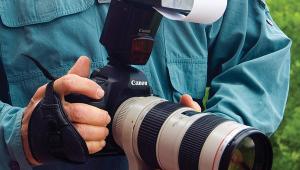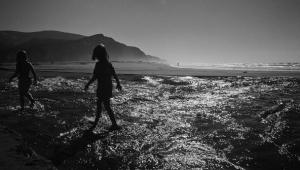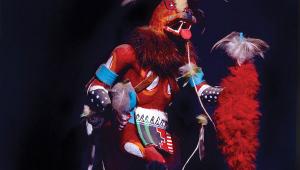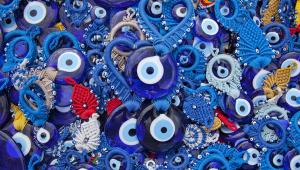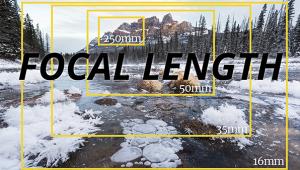Umbrellas Versus Soft Boxes
Umbrellas Versus Soft Boxes
May The Best Modifier Win!
by Steve Bedell
You’re buying studio lights, maybe for the first time. After deciding which lights will fit your style and budget, you need to decide upon light modifiers. The two most common ones are umbrellas and soft boxes. Which should you buy and why? And is there that much of a difference? Let’s take a look now and see the differences and similarities so you can decide which one makes sense for you. Or perhaps you’ll get both!
For the most part, I’ll be talking about how it relates to portrait photography, though I’ll address some issues that are relevant to commercial/product photography as well.
Price
Umbrellas win this battle easily. A large umbrella may cost less than $40, a large soft box $700 or more. Umbrellas are pretty simple devices. Just take a rain umbrella, change the fabric, lose the handle, and you’ve got a photo umbrella! The technology has been around for some time now, so there’s not a lot of R&D investment. We’ll see why the big difference later. Soft boxes also usually require a “speed ring” to fit the box to your particular brand of light, so if you change the light, you need to buy a new speed ring that probably cost more that an umbrella.
Convenience
Here again, you gotta’ hand it to the umbrella. Just close it up, throw it in the trunk or a loose gear
bag, and off you go. While there are some hybrid boxes that fold like an umbrella, most must be taken apart and then reassembled on location. If you just use it in the studio and never break it down, this would not be an issue.
Quality Of Light
Ahh, here’s a big one. Is there any difference in the quality of light on your subject? Well, yes and no, as we’ll see in the photos. There are other considerations here, such as color (white/silver/metallic) and “specularity” of both modifiers. Size of course matters as does how close you place the light to your subject. It also matters where you place your subject in relation to the soft box or umbrella, that is whether you are using the center of the light or an edge by “feathering”, or whether the soft box has an interior baffle or not. Rather than go through a myriad of combinations, let’s just state a few observations and maxims:
1. The bigger the light, the softer the light.
2. The closer the light is to the subject, the softer it is.
3. The softest light from an umbrella is obtained by using a “shoot through” umbrella.
4. The softest light from a soft box is obtained by using an interior baffle.
5. The more specular the reflecting surface of the umbrella, the harsher the light. For example, metallic is harsher than silver, silver is harsher than white.
Catch Lights
Some people get really hung up on catch lights. I don’t. Some like round, some like rectangular, some like only one, and some hate the spindly look of umbrellas in their subject’s eyes. A lot of this is personal preference. If you like rectangles, get a soft box. If you like round either use an umbrella, a round soft box, or mask off your soft box with a circle. Your choice!
Control
By now, it might seem like an umbrella can manage to do just about anything a soft box can—not so fast. There are times when a lighting situation calls for control that an umbrella just can’t match. Control is where the soft box shines. Let’s say you want to light your subject and not the background. Easy with a box, possible but not so easy with an umbrella, especially in a small room where the light that spills from an umbrella will go just about everywhere. How about using a strip light to just rim light the side of your subject, or a hair light that you can carefully position? Again, the province of a soft box. You can also use louvers and baffles and it’s much easier to “gobo” or block light from a soft box to avoid lens flare.
What about commercial applications? When was the last time you saw a photo of a wine bottle with a big umbrella reflection on it? That’s right, never. There are many commercial applications, from wine bottles to cars, where the shape of the highlight is critical to the image, and this is the exclusive territory of boxes.
By now, you should have a pretty good idea of what fits your needs. I personally use an umbrella or white wall as a fill light since my only concern there is a base density of light. I have several soft boxes in different sizes that I use for my main light so that I can control how much light I have falling off on the background, how soft I wish it to be, etc. It is also easier to control my light intensity across a bigger area with a box, such as in a group portrait, but that’s for another article.
Large Soft Box
The soft box shot shows the beautiful and gradual transition you get when using a large soft box with the subject placed toward the back end and the rest of the box in front of him to allow the light to “wrap around” and create it’s own fill. Note the shape of the catch lights. Model: John Lalas. (#1)
#1  |
|
|
In this image I used a 24” soft box as the main light and turned my background light toward my subject to use as an accent light coming from the left. This keeps the background dark and adds drama to the image since there is very little light spill from the small soft box. (#2)
#2  |
Umbrellas
The 36” silver umbrella also does a great job producing a nice transition of highlight to shadow area and produces a round catch light. (#3)
#3  |
The large white umbrella produces a very soft light also. Note that the size of the room you’re working in and the color of the walls and ceiling will greatly affect the result. (#4)
#4  |
Shooting through a large white umbrella not only produces a beautiful quality of light for portraits but also gives us a round catch light with just a touch of those umbrella “spiders” that can easily be retouched if you want. (#5)
#5  |
I used a smaller hex shaped silver umbrella for this image. The light is a little harsher than the others but there is so much spill in my small studio it’s still very acceptable. (#6)
#6  |
Diagram
I kept the main light in the same place throughout. I used a fill light bounced off a white wall that was two stops less than the main light. Nikon D300 with Tamron 28-75 f/2.8 lens, ISO 100, f/6.3.
 |
- Log in or register to post comments

